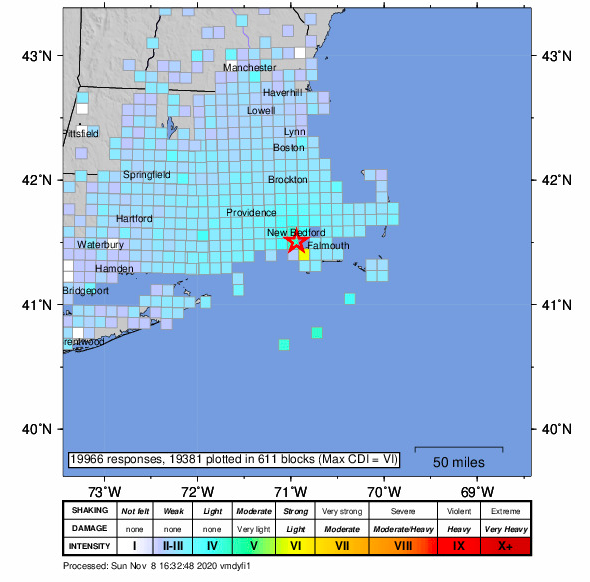NORTH SMITHFIELD – It’s a rare occurrence in New England, and in North Smithfield, many assumed the shaking was the result of blasting for the Iron Mine Hill Road solar project.
At 9:11 a.m. on the morning of Sunday, Nov. 8, a magnitude 3.6 earthquake shook southern New England.
The earthquake came from Bliss Corner, Mass., a town nine miles from New Bedford. According to seismic waves measured at the Weston Observatory, the quake was 10 km in depth.
Reports of light shaking came in from residents as far as southern New Hampshire, with weaker activity registered even further north, according to the U.S. Geological Survey.
With ongoing blasting making way for a large solar array in town, many residents questioned if the shaking came from the project by Green Development.
Town Administrator elect Paul Zwolenski said he called North Smithfield police to ask about the event.
“I knew it wasn’t blasting,” Zwolenski told NRI NOW late Sunday morning.
It’s a rare phenomenon in the area, but not unheard of: according to USGS, moderately damaging earthquakes strike somewhere in the region every few decades.
“People in New England, and in its geological extension southward through Long Island, have felt small earthquakes and suffered damage from infrequent larger ones since colonial times,” a regional assessment notes.
Smaller earthquakes are felt roughly twice a year.
“The Boston area was damaged three times within 28 years in the middle 1700’s, and New York City was damaged in 1737 and 1884,” the tectonic summary explains. “The largest known New England earthquakes occurred in 1638 – magnitude 6.5 – in Vermont or New Hampshire, and in 1755 – magnitude 5.8 – offshore from Cape Ann northeast of Boston. The Cape Ann earthquake caused severe damage to the Boston waterfront.
Even for those closest to the Sunday morning shake, damage reported was light. USGS notes that the last earthquake to cause moderate damage in New England occurred in 1940, a magnitude 5.6 in central New Hampshire.
Although less frequent in the central and eastern U.S., the earthquakes are typically felt over a much broader region, according to the USGS Earthquake Hazards Program, part of the National Earthquake Hazards Reduction Program, established by Congress in 1977.
Did you feel the morning quake? USGS collects information on such events and you can contribute to citizen science by filling out their survey at https://earthquake.usgs.gov/earthquakes/eventpage/us7000cc4d/tellus.








